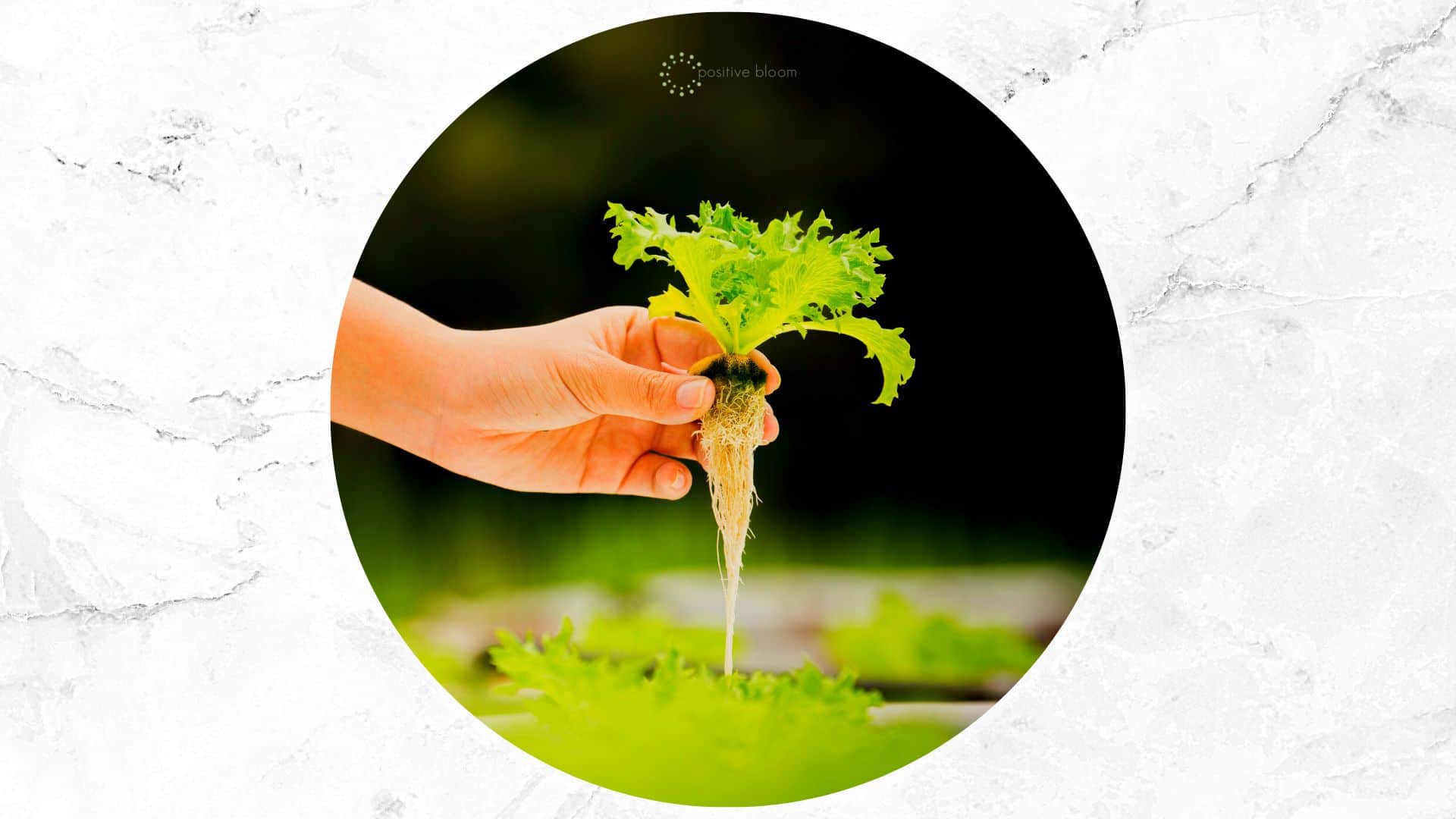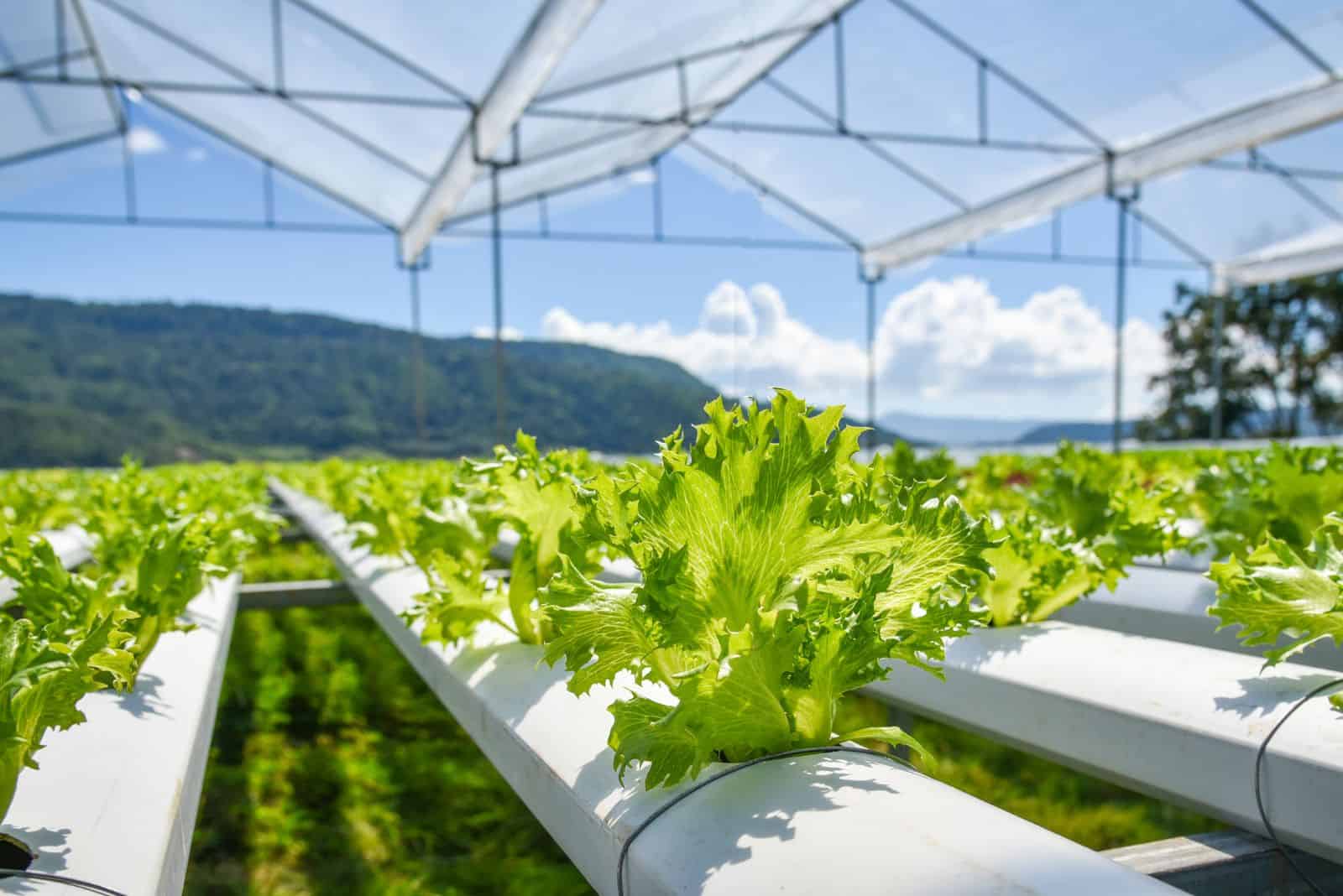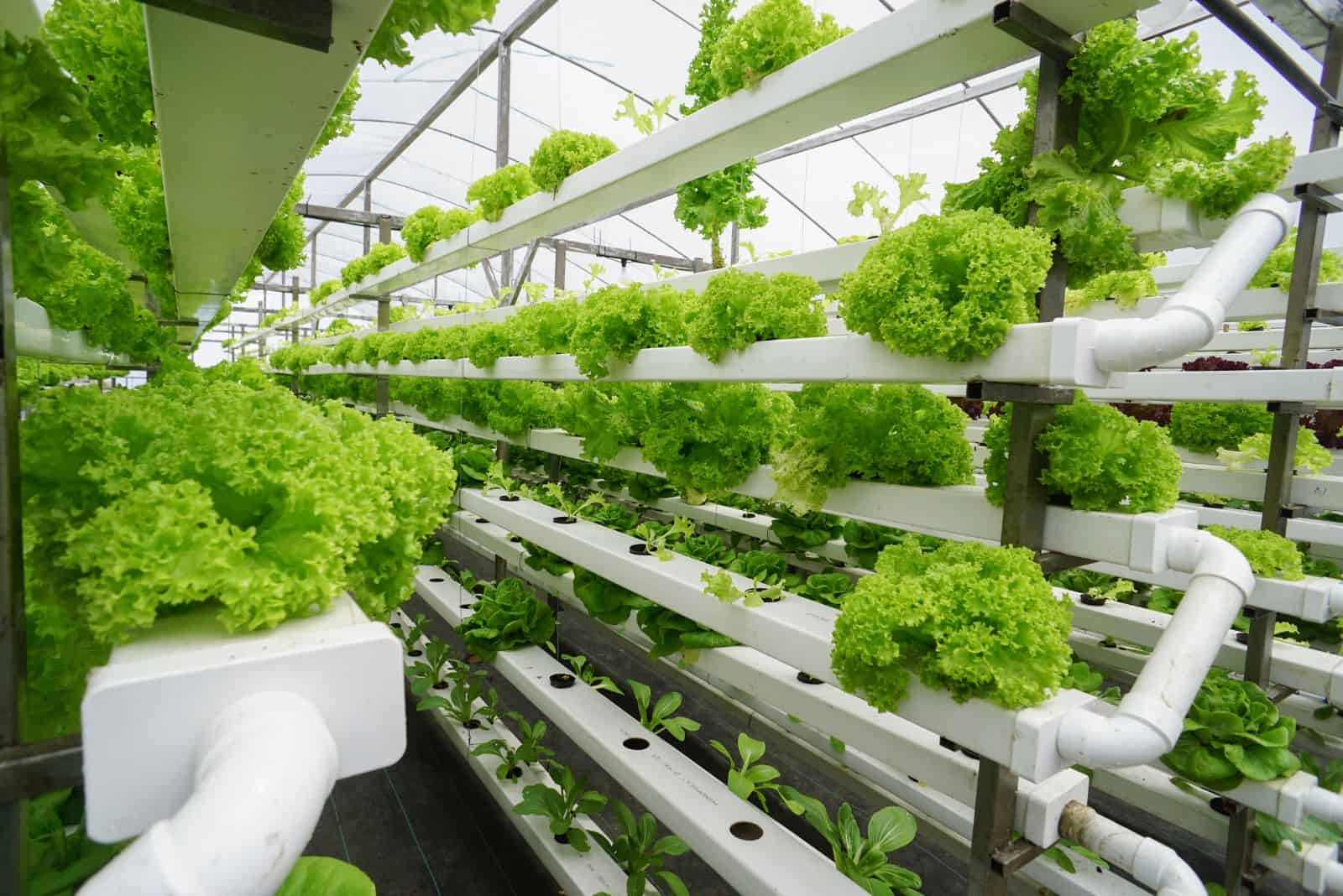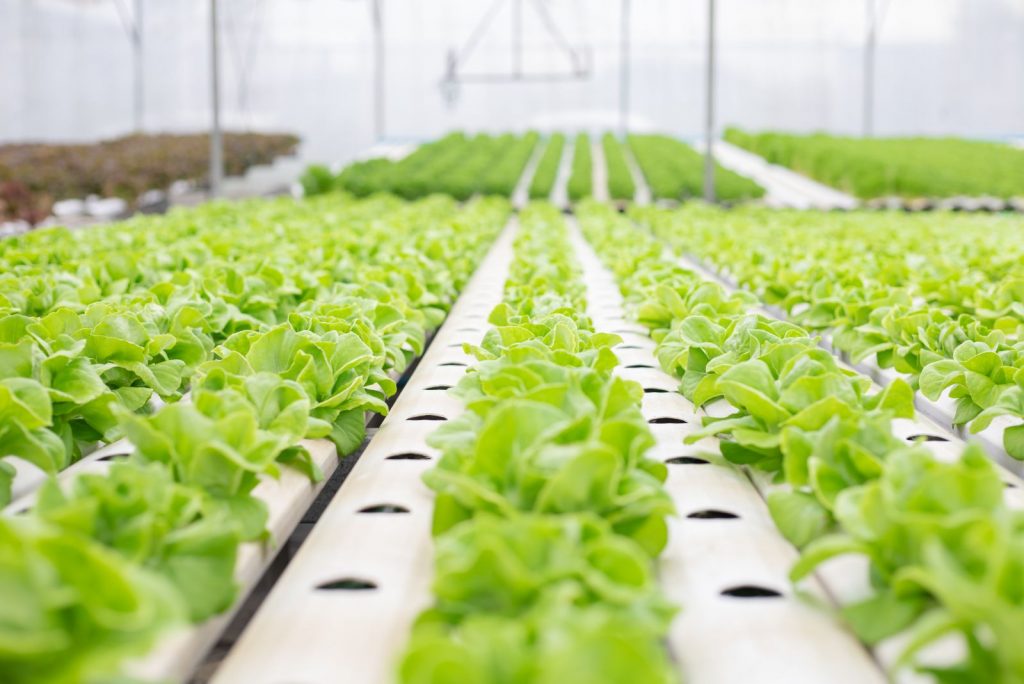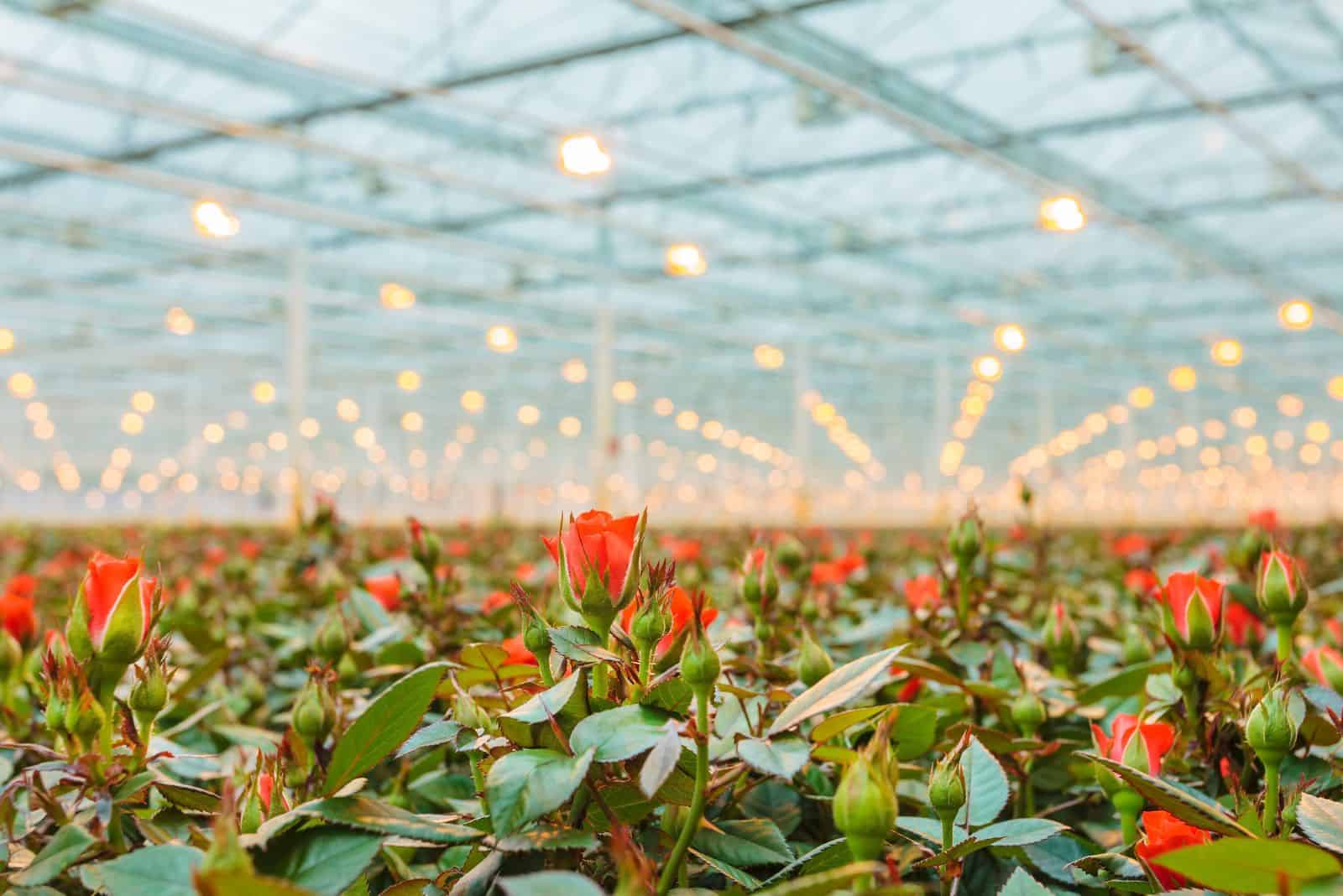Hydroponic farming seems to be the number one topic in the gardening world nowadays.
Science is clear on this one; hydroponic farming is advantageous and about to experience a boom in commercial and indoor growing.
But is this way of cultivation really suitable for everyone? To help you decide, I’ll share my thoughts on the subject and discuss the pros and cons of hydroponics.
Let’s dive straight in!
Hydroponics: To Use Or Not To Use?
Hydroponic farming refers to plant cultivation in a soilless growing medium. (1)
I’ll go through the advantages of hydroponics from a scientific point of view, as well as the disadvantages from the perspective of small farmers.
Here’s a table with an overview of the advantages and disadvantages of hydroponics:
| Pros of hydroponics | Cons of hydroponics |
| Water recycling | High initial and operational costs |
| Lower use of chemicals | Diseases spread faster |
| Lower risk of pests | Requires specific know-how |
| Efficient land use | Requires pH control |
As I always say, you must understand the drawbacks to avoid surprises!
Let’s get started!
Pro: Hydroponics Needs Less Water
We are experiencing a water shortage and it seems like it’s only the beginning.
Statistically, the agricultural sector uses 70% of water in the world (2), and hydroponics saves up to 95% of irrigation water. (3)
When you install this system, you’ll notice the water goes straight to the roots. Since the evaporation rate is low, you save a lot of water.
What does this mean for a small farmer? We need to think of it on a higher level; this is our opportunity to help the world win the battle against drought.
Con: High Initial Investment And Operational Costs
Honestly, my first concern with this cultivation method was the initial cost. The lowest price for these systems is about $50. You can get 12 pods for this price, which isn’t much if you ask me.
But the story doesn’t end with installing the system.
Here’s a list of other costs you can expect after you install the system.
• High electricity bills (doesn’t refer to passive systems (kratky and wick)
• Heating costs
• Nutrient solutions
• Artificial lights
Pro: Hydroponics Reduces Uses Of Chemicals
One of the major benefits of soilless plant cultivation is reduced use of chemicals.
We live in a world where you can’t be 100% sure the crop you bought is organic. The best solution is growing your own plants, and hydroponics is one of the best ways to do so.
Plants are immersed in a nutrient solution when cultivated hydroponically, which results in lower needs for supplemental feeding.
Bear in mind that hydroponic vegetables aren’t 100% safe to consume. (4) However, compared to traditional cultivation methods, the risk is way lower.
Con: Requires Specific Know-how
Don’t let the ‘easy to install and use’ on the package fool you. Hydroponics isn’t as easy as it seems and requires a lot of knowledge and skills.
For instance, if you decide on coco coir hydroponics, you need to know that the substrate alone doesn’t offer all the nutrients the plant needs. Supplemental ingredients will be necessary depending on the needs of each plant.
Technical knowledge is another prerequisite for hydroponic farming. The best example is the water pump. Malfunctions in water pumps can lead to plant death, so it’s crucial to recognize the problem and solve it as soon as possible.
Pro: Relatively Pest-free
I’ve been cultivating plants for years and if I had to choose one thing that bothers me most, it would be pest infestation.
Don’t think of pests as something that can happen to beginners only; these little creatures love everyone’s plants and are always waiting for an opportunity to attack.
Just for clarification, you can still notice pests munching on the leaves of your beloved plants cultivated in hydroponics. The difference is that the plants are less susceptible because of a controlled environment.
Additionally, many pest species need soil to survive. So, no more grasshoppers on your lettuce!
Con: Diseases Spread Faster In Hydroponics
You’ll often hear that hydroponics is a disease-free growing method. Well, this is partially true.
Your plants will definitely be less susceptible to disease because their environment is completely controlled.
However, hydroponics gives an opportunity for waterborne diseases to settle in. (4)
Here are the three major pathogens that thrive in hydroponics:
• Phytium
• Fusarium
• Phytophthora
Pro: Efficient Land Use
Conventional cultivation methods need a lot of space. This is one of the major reasons we need alternative growing methods.
Hydroponics isn’t limited when it comes to the types of plants you can cultivate.
Commercial production of flowers requires large fields, which results in high water use. Hydroponics gives an opportunity to cultivate more flowers, especially if we are using vertical types.
When it comes to indoor cultivation, some flowering plants thrive in hydroponics, which enables us to have cut flowers year-round.
Con: Requires pH Control
The pH levels in hydroponics typically range from 5.5 to 6.5. This range isn’t suitable for all plant species.
Here are the possible risks for plants grown in mediums with the wrong pH level.
pH < 5 = Magnesium/calcium deficiency, iron/copper toxicity
pH > 5 = Iron deficiency
If you cultivate plants in hydroponics and notice stunted growth, new leaves dying, or leaf necrosis, the pH level in the medium is most likely wrong.
This part of hydroponic cultivation is the trickiest for novices. You’ll constantly need to monitor pH and water hardness because it can cause an increase in buffering capacity. (6)
Wrapping Up
You’ve seen some major pros and cons of hydroponics, and I hope you now have a better view of the subject.
Science is definitely on the side of this cultivation method, and it has many benefits for small farmers, such as reduced risk of pests and land use.
I believe that the major prerequisite is knowledge of the technology used in hydroponics. Even if you have enough money to install the system, you can’t do much without knowledge.
But with good research and guidelines, anything is possible. Who knows, maybe it’ll be the only method of plant cultivation in the future.
Until next time!
6 References
1. Niu, G., & Masabni, J. (2022). Hydroponics. Plant Factory Basics, Applications and Advances, 153-166.
2. Food and Agriculture Organization. (2011) The State of the World’s Land and Water Resources for Food and Agriculture—Managing Systems atRisk; Food and Agriculture Organization Publications
3. Karas,ahin, M. (2014) Effects of different applications on dry matter and crude protein yields in hydroponic barley grass production as aforage source. Ziraat Fak. Derg. Süleyman Demirel Univ.
4. Sela Saldinger, Shlomo, Victor Rodov, David Kenigsbuch, and Asher Bar-Tal. (2023). Hydroponic Agriculture and Microbial Safety of Vegetables: Promises, Challenges, and Solutions" Horticulturae
5. Suárez-Cáceres, G. P., Pérez-Urrestarazu, L., Avilés, M., Borrero, C., Lobillo Eguíbar, J. R., & Fernández-Cabanás, V. M. (2021). Susceptibility to water-borne plant diseases of hydroponic vs. aquaponics systems. Aquaculture.
6. van Rooyen, Naas & Nicol, Willie. (2022). Inferential control of the phosphate concentration in hydroponic systems via measurement of the nutrient solution's pH-buffering capacity. Scientia Horticulturae.

